Outwardly, modern ammunition is entirely self-contained. Each round consists of a projectile, powder, and primer sealed from the elements in a brass, steel, or aluminum case. It is tempting to keep them in their factory cardboard boxes and store them just about anywhere. But ammunition is not completely weather-proof and how you store your rounds directly impact how reliable and powerful that ammunition is when you pull the trigger. Follow along as we explore three common storage methods: ammo cans, plastic totes, and shelves, to see which is most effective.
Ammo Cans
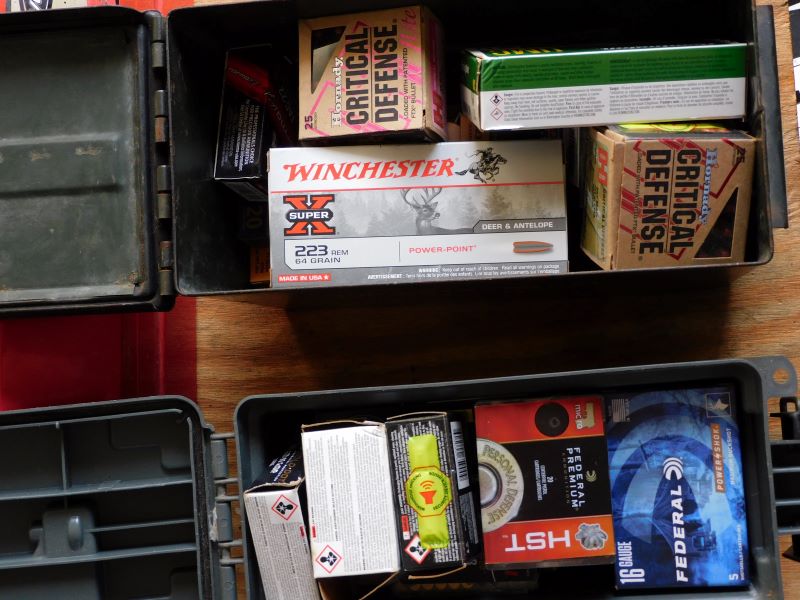
Ammunition cans or ammunition boxes were designed for the US military for the safe transportation and storage of ammunition. Most ammunition cans on the market are either military surplus or new civilian equivalents. They are usually made of thin-gauge steel and painted in olive drab. Most cans come in two sizes: a smaller .30 caliber can or a larger .50 caliber can. The can has a hinged door at the top and a hinge that allows it to swing to one side. The other side has a latch to lock down the door. The door will have a rubber seal on the inside edge that mates with the edge of the container.
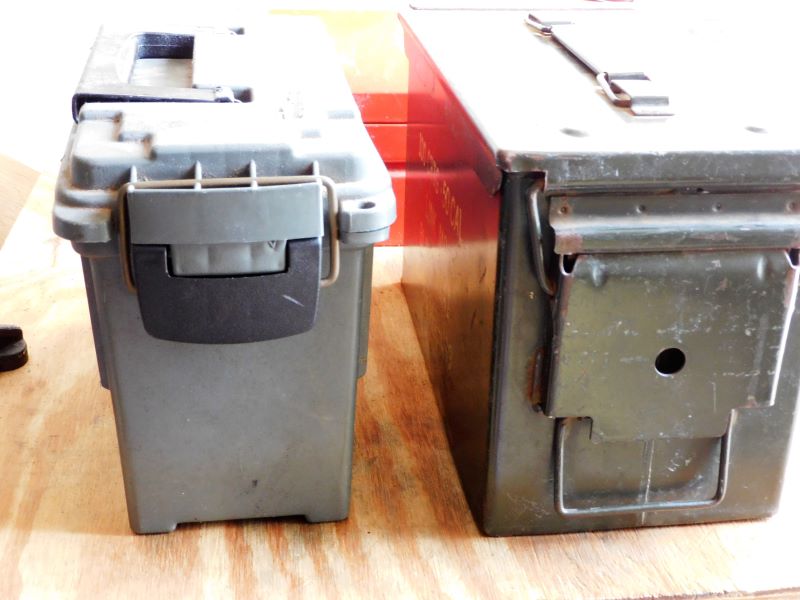
Although initially meant to hold belts of machine gun ammunition, both the .30 caliber and .50 caliber cans make for great storage options. These are produced in mass and are often comparable in price to plastic totes, but with the added benefit of their rigid all-metal construction. Both types are equally suited to storing loose ammunition.
If you prefer to keep your ammunition segregated in its factory boxes, the .30 caliber can offers plenty of room for small boxes of 22 Long Rifle, premium pistol ammunition, and smaller rifle cartridges like 5.56 NATO. The larger .50 caliber can is more flexible. It is just large enough to store cleaning kits and larger rifle round boxes. The only downside of the .50 caliber can is added bulk and heft when fully loaded down.
Both types are air and watertight thanks to the rubber seal. Whether you opt for a can or a tote, the maintenance of the seal is important. Over time, the rubber will start to fade and crack. To prevent this, I spray the seals with AT-205 Reseal once every few years. This solution rejuvenates rubber seals and works well in automotive applications. It works equally well for ammo cans.
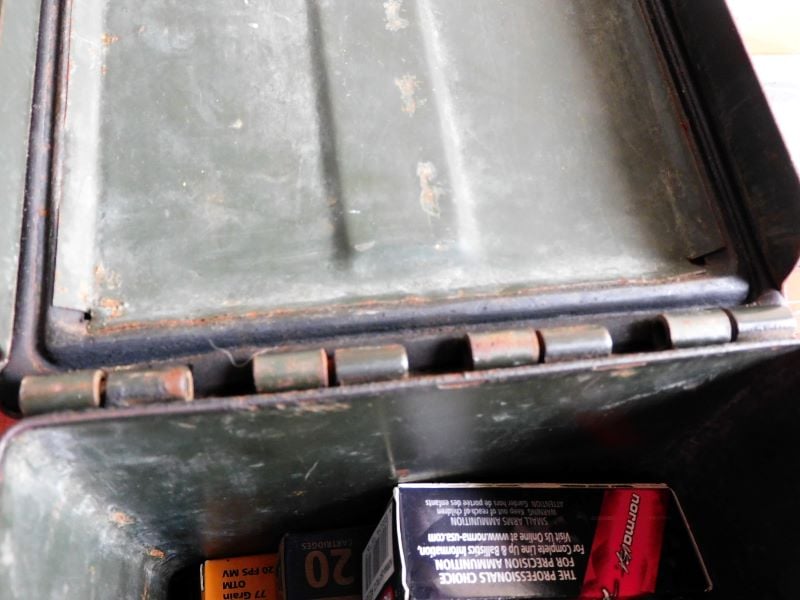
Plastic Totes
Plastic totes normally use the same hinged-door and rubber inner-seal arrangement, but they have a few advantages and disadvantages over the old-school can. They are, of course, made of plastic and are quite a bit lighter than ammo cans. Totes also come in a number of shapes and sizes to suit your storage needs. Some mimic the size and function of small .30 caliber cans, while others are spacious storage units with trays to segregate tools and small parts. I use such a small can for my range ammunition and it often doubles as a rifle or pistol rest because the plastic door will not mar delicate metal and wood finishes.
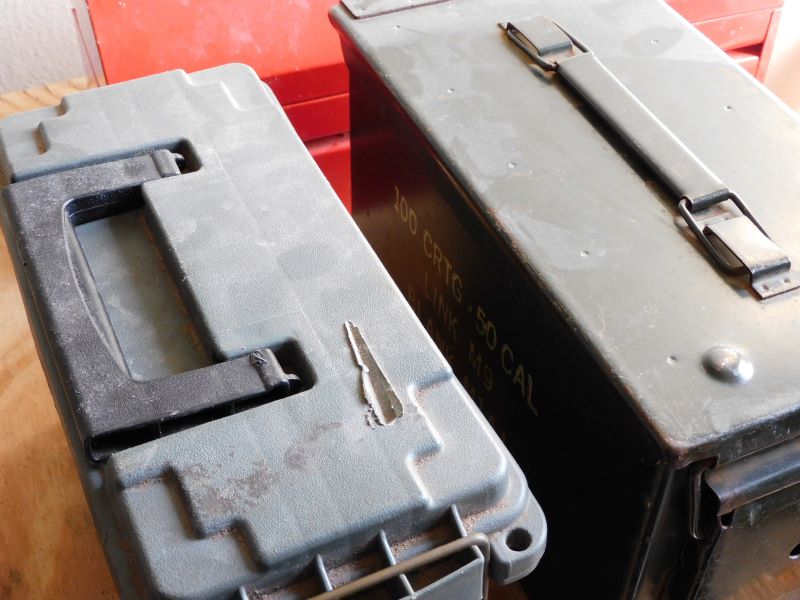
In some ways, totes are both more delicate and more durable than ammunition cans. On one hand, plastic is generally less tolerant of hard abuse. This is especially so if plastic totes are subjected to prolonged exposure to sunlight. Heat and sunlight will eventually dry the plasticizers out of the base material, making breakages far more likely with age. On the other hand, plastic has some elasticity and differences in thickness over sheet metal and can absorb abuse that would leave a hole in metal. For a number of years, plastic totes were the cheaper option over ammo cans but the economy of either totes or cans is a coin toss.
Shelves
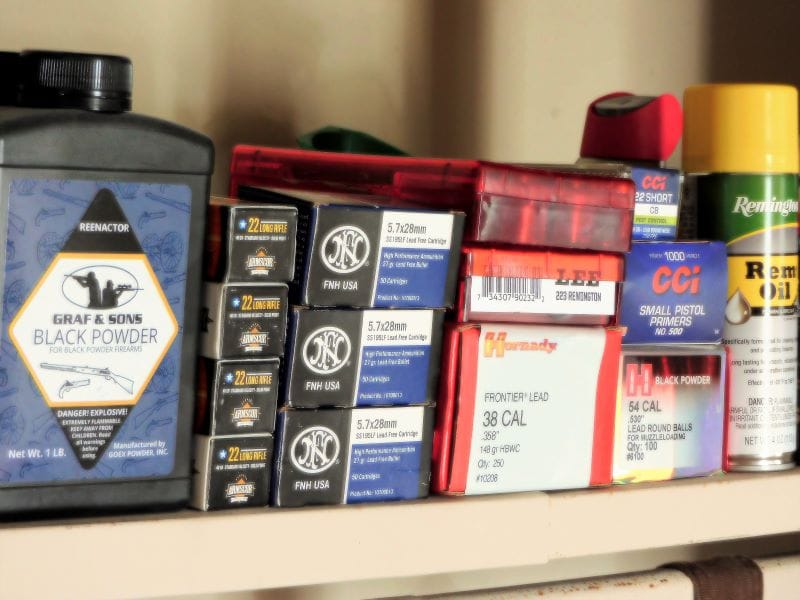
Totes and cans are a great way to keep your ordinance organized, airtight, and waterproof. But sometimes you need your ammunition to be handy. Needs are going to vary. If your home defense firearm is an AR-15, chances are good that you will have a few PMags sitting on a shelf just in case. I am a reloader and like to keep a certain amount of powder and primers on a shelf ready for use, while the rest sits in storage. I also keep a box of 22 LR ratshot handy for pests. There is nothing inherently wrong with using shelves in your home to store ammunition, but where and how you stack your ammo becomes more important.
As a general rule, ammunition should be stored in a cool and dry place. With cans and totes, there is some forgiveness to that rule. Ammo on a shelf should be stored in a cool dry place, where extreme temperature changes and humidity will not degrade the chemical compounds in the powder and primers of the ammunition. SAAMI recommends that ammunition be stored at temperatures between 55-85° F with a humidity level below 60%. In the home, the bathroom and the attic are obvious no-nos. The basement is a typical place to stash any supplies, but it is not the perfect place for ammunition either for the same reasons. I stick to middle-floor locations not exposed to much water or sunlight.
How your ammunition is contained is also worth thinking about. Leaving out loose ammunition can invite ingress and plastic shell containers can invite condensation. However, the standard factory cardboard box that comes with your ammunition actually absorbs moisture, preventing it from getting to the ammunition. While sticking your ammunition in a can or tote and putting it on a shelf is the best solution, your ammunition can last in a dry place stored in the box that it comes in.

